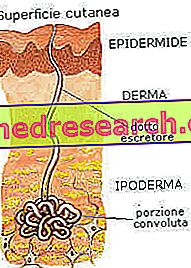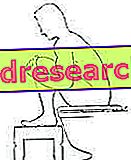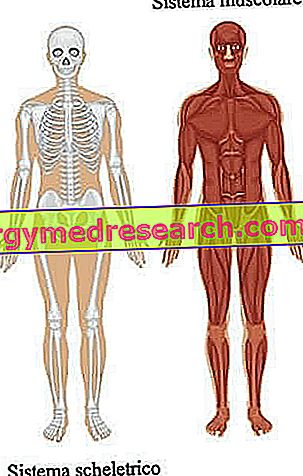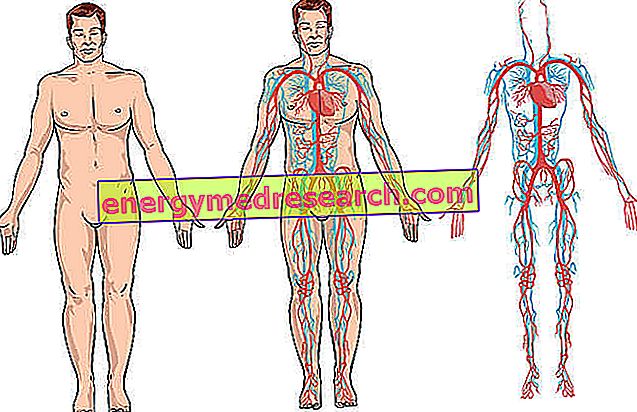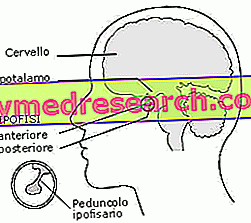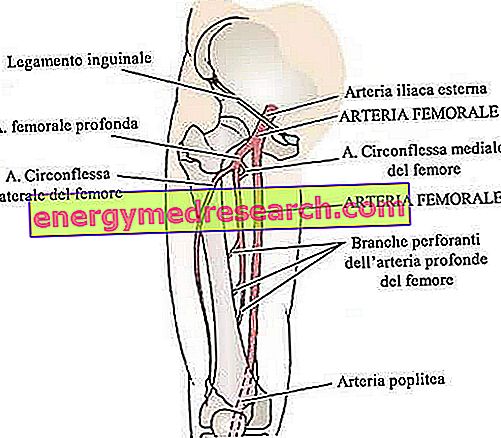Sweat Sweating Excessive sweating Hyperhidrosis Lose weight by sweating In the skin we find three types of glands: the sweat glands, the apocrine glands and the sebaceous glands. Each sweat gland sinks up to the hypodermis and includes a convoluted part, which represents the secreting unit, and a ductal portion, which opens onto the body surface by means of a pore (excretory duct)
Category physiology
Generality The possible alterations of the color of the skin can be substantially divided into two large groups: Variations due to increased color (hyperpigmentation); Dyschromias related to a loss of tone (hypopigmentation). The underlying causes of skin color changes can be of various origins and nature: some can be inherited, while others can be acquired over a lifetime
The rectal ampulla is a dilation of the last tract of large intestine, called rectum and predisposed to the accumulation and excretion of feces. This channel is about 12-14 centimeters long and shows an uneven caliber: for many traits it is similar to that of the colon, but in the initial portion, after a short throttling, it presents a pyro-dilation with a lower base, known as rectal ampulla ( endopelvic rectum)
Generality In anatomy, anastomosis is defined as a link between two organs, blood vessels, nerves, connective fibers or myocardial fibers. An anastomosis can naturally be present in a given organ; specific examples are the heart of the fetus, in which the right and left atria are in communication with one another, or the arteriovenous, veno-venous and artero-arterial anastomoses
The integumentary apparatus consists of the skin or skin and skin appendages (hairs, sweat glands and nails). Its functions are numerous and can be summarized in the following points: protects the body from external agents (trauma, microorganisms, ultraviolet radiation, etc.) contributes to thermoregulation synthesizes and deposits lipids facilitates the excretion of waste substances it is essential for the synthesis of vitamin D3 allows us to perceive thermal, painful and pressure stimuli (tactile)
Generality The locomotor apparatus is the result of the union between the skeletal apparatus and the muscular apparatus. The main anatomical elements that constitute it are: bones, cartilaginous tissue, muscles, joints, tendons and ligaments. The bones form the skeleton and serve to give stability and support to the human body, and to protect some internal organs; cartilage tissue supports bone action; skeletal muscles serve movement; the muscles of the heart serve to contract the latter; the smooth muscles line the hollow organs present in the body; joints, tendons and ligaments allow bones an
The aorta is the main artery of the human body, both in size and in terms of elasticity: in the adult, it is approximately 30-40 cm long and has an average diameter of 2.5-3.5 cm. The aorta originates from the heart, in particular from the left ventricle, which pushes inside it the oxygen-rich blood coming from the left atrium (where the pulmonary veins come out)
Generality The circulatory system , or cardiovascular system , is the whole: of organs and vessels responsible for transporting blood of organs and vessels responsible for transporting the sap. The purpose of the circulatory system is to provide for: the survival of the body's cells, disease protection, body temperature and pH control the maintenance of homeostasis
Aromatase functions Aromatase is an enzymatic system responsible for the conversion of androgens, typically male sex hormones, into estrogens, which are instead characteristic of the female organism. As the name itself reminds us, aromatase has the ability to aromatize the first ring of androgen carbon (ring A) through the oxidation and subsequent elimination of a methyl group
In the human race the reproductive function is controlled by nervous and hormonal correlations, that is by the nervous and by the endocrine system, which complement each other. The central nervous system, sensitive to external and internal (endogenous) stimuli, transmits its messages by processing neurotransmitters
Generality The femoral artery is the large even arterial vessel that crosses the thigh and which, with its branches, provides blood circulation to numerous districts of each lower limb. The femoral artery starts behind the inguinal ligament (beginning of the thigh) and ends where the popliteal artery begins, almost at knee height

